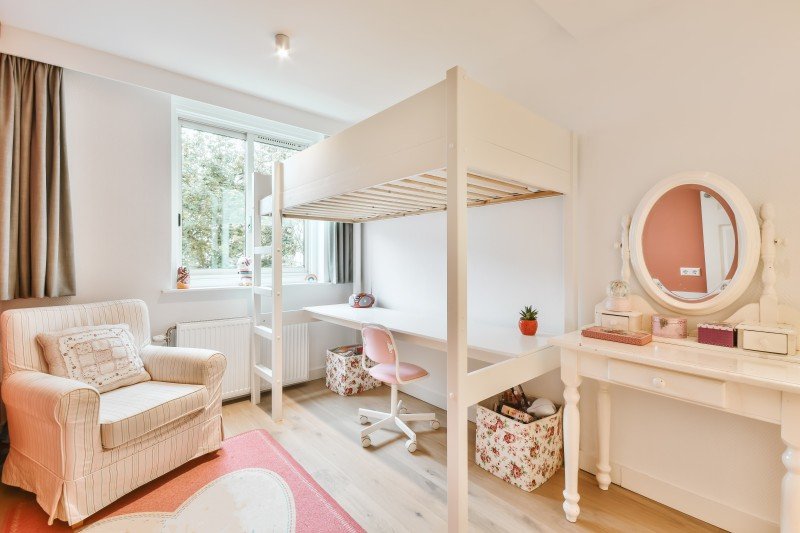Bunk Beds for Kids: A Comprehensive Guide
Bunk beds have actually been a popular option for kids's bed rooms for many years. They provide a space-saving solution that takes full advantage of flooring location, offers enjoyable climbing alternatives, and can be found in a range of designs that interest kids's imaginations. This article explores the benefits, factors to consider, styles, and safety functions related to bunk beds for kids.
Advantages of Bunk Beds
Bunk beds present numerous advantages that make them an appealing option for households. Here are some key benefits:
Space Saving
- Bunk beds permit two or more kids to share a space without compromising space for play or other activities.
Cost-Effective
- Getting a single bunk bed can be more economical than buying 2 separate beds.
Enjoyable Factor
- Kids frequently see bunk beds as an enjoyable location to sleep and play, fostering a sense of adventure.
Flexibility
- Bunk beds are readily available in numerous configurations, consisting of L-shaped, loft beds, and even convertible designs that can change as children grow.
Organization
- Many bunk beds include built-in storage choices, such as racks and drawers, assisting keep spaces organized.
Key Considerations Before Purchasing
Before buying a bunk bed, it's vital to consider specific elements, such as:
- Space Requirements
Step the space to ensure that there is adequate vertical space, enabling sufficient headroom on the top bunk. - Age of Your Children
Consider their age and maturity. Lots of producers suggest that kids under 6 should not sleep in the top bunk due to security issues. - Weight Limit
It's essential to examine the weight limitations of the bunk bed for both the top and bottom bunks to guarantee safety. - Design Preferences
Choose a design that matches the space's decor and the children's preferences. - Material
Bunk beds are readily available in different products, such as wood or metal. Each has its advantages and downsides relating to toughness and aesthetic appeals.
Styles of Bunk Beds
Bunk beds can be found in different designs to fit various aesthetic appeals and functional needs. Here's a list of some popular styles:
- Standard Bunk Beds
Traditional stacked beds that consist of 2 beds constructed one above the other. - Loft Beds
A bed elevated high off the ground, with space below for a desk, play location, or storage. - L-Shaped Bunk Beds
2 beds arranged in an L-shape, offering more flooring space and an unique design component. - Twin Over Full Bunk Beds
These alternatives include a twin bed on the top and a full-sized bed on the bottom, accommodating older children or adults. - Triple Bunk Beds
Designed for 3 kids, these beds usually consist of three stacked beds, perfect for larger households.
Safety Features to Consider
Making sure the security of children using bunk beds is critical. Here are some security features to look for before making a purchase:
- Guardrails
A bunk bed should include durable guardrails on the top bunk to avoid unintentional falls. - Ladders
Ensure that the ladder is firmly connected and easy for kids to navigate securely. - Stability
Try to find bunk beds with lower centers of gravity and large bases to supply better stability. - Quality Construction
Pick beds made from resilient materials that satisfy safety requirements, such as ASTM (American Society for Testing and Materials) regulations.
Frequently Asked Questions About Bunk Beds
1. What age is suitable for a leading bunk?Generally, children aged 6 and older are advised for oversleeping the leading bunk. 2. Are bunk beds safe for toddlers?Most professionals advise versus
putting young children in the top bunk due to the
risk of falls and improper ladder use. 3. Can bunk beds be separated?Many bunk beds are developed to be separated into 2 standalone beds,
offering included flexibility as kids grow
. 4. How do I keep a bunk bed?Regularly check for loose screws and wear, keep bed mattress clean, and ensure that the bunk bed is
steady to lengthen its lifespan. 5.
Exist any unique bed mattress requirements for bunk beds?Yes, mattresses for bunk beds ought to fit snugly without leaving gaps. Usually, thinner bed mattress
(around 6 to 8 inches )are advised for top bunks for safety. Bunk beds use a flexible, practical, and fun option for children's sleeping plans, taking full advantage of space while accommodating several kids in one space. By thinking about the important elements
of style, safety, and space, parents can make a notified decision when picking the ideal bunk bed for their children's needs. With Elia Zehr and upkeep, a bunk bed can be a cherished piece of furniture that offers years of usage and satisfaction for kids. Summary Table of Bunk Bed Styles Design Description Best For Requirement Bunk Beds Classic design, two stacked beds Smaller rooms Loft Beds Elevated bed with open space beneath Research study or play areas L-Shaped Bunk Beds Two beds in an L-shape
Included floor space Twin Over Full Twin on the top,
| complete on bottom Accommodating older kids Triple | ||||||
|---|---|---|---|---|---|---|
| Bunk Beds | Three stacked beds | Larger households By understanding | the numerous options readily available, designated factors to consider for safety and performance, and proper age guidelines, families | can pick the ideal bunk bed that not | just enhances their living space | however also ensures a safe and |
| enjoyable sleeping environment | for their children.

|
